The Black Gnat fly (Bibio Johannis) is one of the essential trout and grayling flies that are always in my fly box, and they’ve been…
the downfall of some beautiful trout.
It’s a fly that will work all year long but especially in spring and autumn when clouds of small flies are swarming above slow-moving sections of rivers.
This member of the Diptera family is a terrestrial insect and not aquatic in origin, and as such, they neither hatch from the water nor return there to lay eggs. They inhabit wet places and end up being blown onto the water.
The black midge fly and similar small flies are common on rivers and stillwaters across the United Kingdom.
So, let’s take a look at the three gnat fly patterns I regularly carry in my fly box…
How to tie the Black Gnat flies
The pattern is simple but a little fiddly to tie…
Essentially consisting of a black thread body and a black cock hackle wound around a wing post. A good dry fly for beginners to start their fly tying journey because you only need a few materials.
Fly tying material list:
- Hook – Kamasan B100 (#16 to 20)
- Thread – Black 8/0
- Wing post – Cream Antron yarn
- Body – Black 8/0 head
- Thorax – black dubbing
- Hackle – black cock
Step-by-step fly tying instructions:
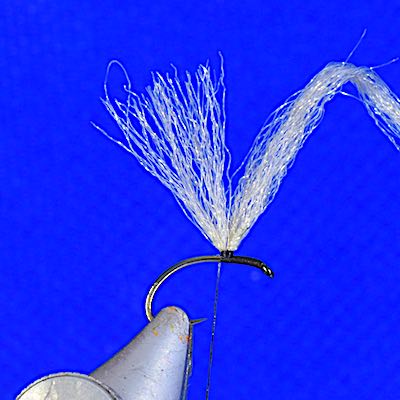
Step 1. Place the hook firmly in the vice and start the thread behind the eye. Wind the thread in touching turns, about a 1/3 the way down the hook shank. Next, secure the cream Antron wing post onto the hook.
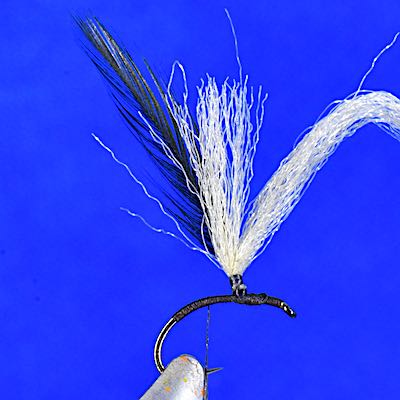
Step 2. Taka a small black cock hackle and strip the fur at its base. Tie the hackle in by its base and wind the thread up the wing post. Form the body by winding the black thread down to the hook bend and back towards the wing post.
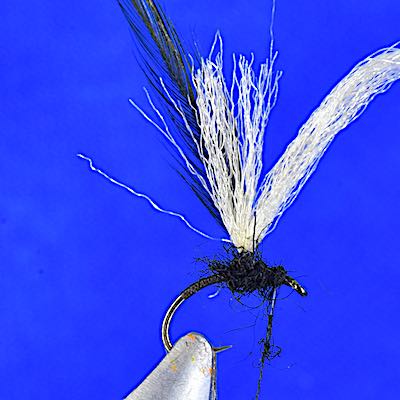
Step 3. Lightly dub the waxed thread with a fine dubbing material. Then build the body area on either side of the wing post.
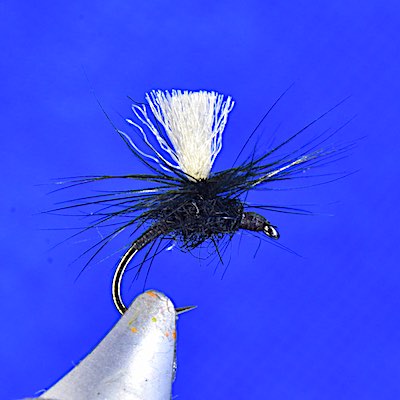
Step 4. Wind the cock hackle around the wing-post and tie off. Form the head of the fly with the thread, whip finish, and varnish.
It is worth tying variants with different coloured wing-post because they are useful in difficult light conditions. Alternative coloured posts include orange, yellow and pink.

Black midge fly variants:
In addition to the parachute midge patterns, I also carry a variant with added sparkle, which is also a great fly pattern…

Sparkle winged Black Gnat fly
- Hook – size 16 to 20 Kamasan B100
- Body – black 8/0 thread
- Wing – 3 strands of crystal flash
- Thorax – fine black dubbing
- Hackle – Black cock neck feather
Finally, on rare occasions, when a dry fly pattern is refused, I carry a simple spider pattern that is fished subsurface…
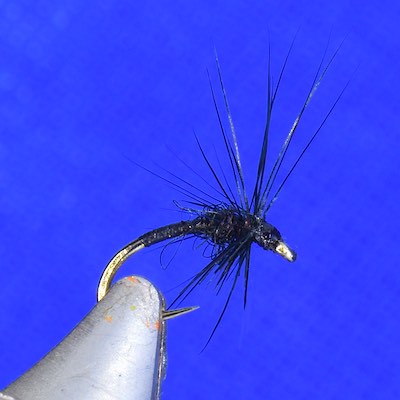
Black Spider
- Hook – size 16 to 20 Kamasan B100
- Body – black 8/0 thread
- Thorax – fine black dubbing
- Hackle – Black hen feather
When and how to fish the Black Gnat
On UK rivers and stillwaters, this fly is an excellent trout dry fly to use when any small dark or black insects are on the water.
Throughout the season, clouds of midges are often seen hovering over the water and become a food source for the trout when blown onto the water.
Black gnat flies are a delicacy of big trout.
On rivers, my first course of action is to tie on the parachute dry fly pattern when I spot a trout sipping midges close to the bank. Often, I begin with a size 18 fly on heavily fished rivers and drop to a size 20 if the former fails.
Midge sipping trout are often large and easily spooked. So, stealth and casting accuracy is important because you’ll only get one or two shots at the prize.
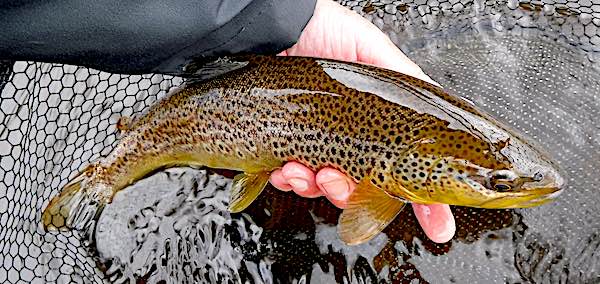
Equipment-wise, I use a 9ft 5# rod for dry fly fishing. Attached to the floating line is a 9ft 5X copolymer leader tipped with a 3 to 4 ft length of 3lb fluorocarbon. Fuller’s mud is applied to the fluorocarbon tippet to remove its shine and make it sink. Whereas, Mucilin grease is applied to the remainder of the leader.
On stillwaters, the Black Gnat fly is found in the margins close to reedbeds and beneath overhanging trees. My first choice would be to try one of the dry fly patterns on a fine leader when trout are taking flies at the surface.
If fish aren’t rising, it pays to fish the black spider wet fly pattern beneath the surface with a very slow figure-of-eight retrieve. This approach has accounted for some lovely brown and rainbow trout.

Finally, I hope this article stimulates you to a Black Gnat fly and test it on your local fishing location or take a trip to fish the Welsh Dee at Llangollen, where it catches fish when other flies fail.
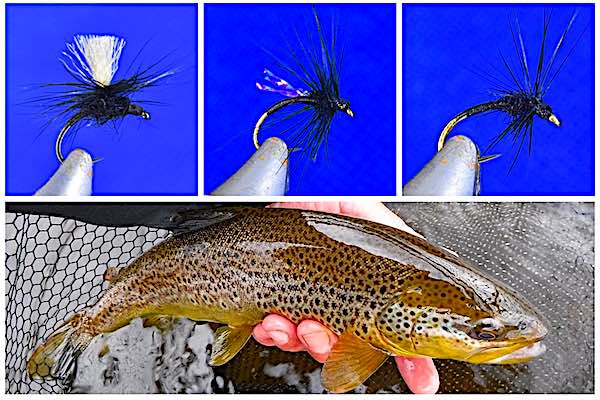
Yet again a very useful set of instructions. Last summer I fished a size 20 black F fly. It was very productive for fussy Grayling. Will have ago at your patterns. Do you normally find smaller is more effective?
Hi Tim,
I rarely fish flies smaller than a size 18 and that is usually in the summer.
Cheers, Andrew
My favourite little fly, has cought me lots of fish on my local fishery, its always good to see someone else’s take on how to tie them, thougherly enjoy reading your article’s, keep up the good work.
Hi Malcolm,
Great to hear you are enjoying the blog articles.
Thanks for the feedback.
Cheers, Andrew
Another pattern l use on still waters is a black suspender buzzer. I find fish it similar to a black gnat dry, but create a series of jerky pulls every minute or so, rainbows will hit you hard, ulmost unmissable.
Hi Steve,
Thanks for the tip on the black suspender buzzer. I will give it a go the next time I fish Stocks Reservoir.
Cheers, Andrew
Always a great read..thank you.
Great to hear you enjoyed it.
Cheers.
very nice andrew
a nicely tied fly keep up the good work
Cheers.
Thank you for the informative description I found it very useful.
Thanks for the feedback – I’m pleased you enjoyed the article. Cheers, Andrew
Great pattern Andrew, very informative
Caught my first on a Black Gnat, it was a 3/4lb white trout from a small stream in Donegal.
Excellent
Once more Andrew very informative useful article, as they all , keep up the good work, great website
Hi Peter,
Great to hear you enjoyed the post.
Cheers, Andrew